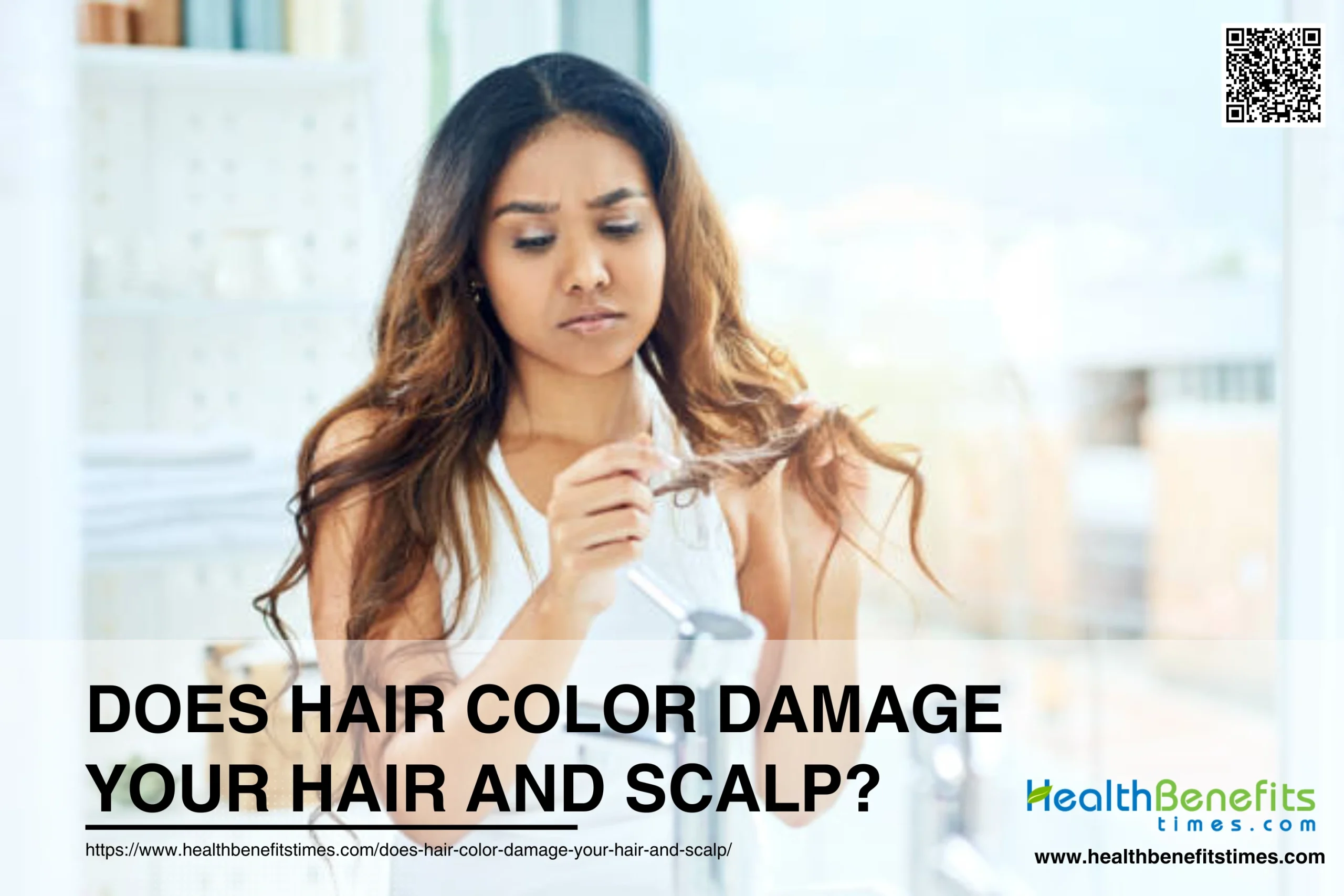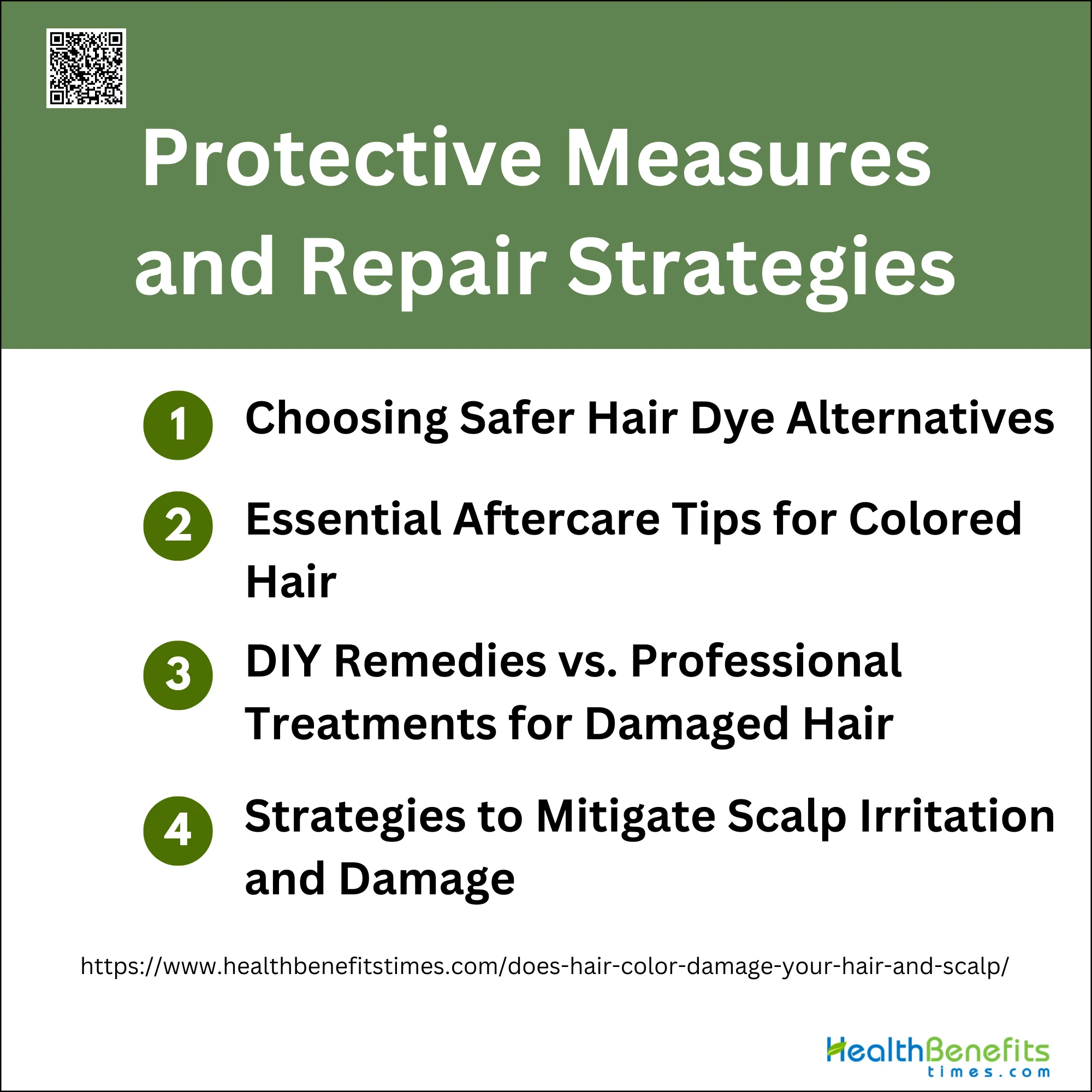 Key Highlights
Key Highlights
- Hair dyes can weaken and damage hair, leading to unhealthy-looking hair and potential hair loss.
- The composition of hair dyes includes chemicals like ammonia, hydrogen peroxide, and PPD, which can be harmful to the hair.
- Different hair colors can affect the structure of the hair, making it more prone to damage.
- Hair type plays a role in the damage caused by hair dye, with natural hair needing extra care.
- Short-term and long-term effects of hair dyeing can impact the overall health and strength of the hair.
- Signs of damage to the scalp from hair dyes include skin irritation and contact dermatitis.
Hair dyeing has become a popular way to change up our look and experiment with different colors. Whether it’s going from brunette to blonde or trying out vibrant hues, hair color has the power to transform our appearance. However, many people wonder if hair dyeing is damaging to their hair and scalp. Does the process of coloring our hair have negative effects in the long run? In this blog, we will explore the impact of hair color on hair and scalp health, the composition of hair dyes, the effects of different hair colors on the hair structure, the role of hair type in coloring damage, the short-term and long-term effects of hair dyeing, and how to identify signs of damage to the scalp from hair dyes. We will also discuss protective measures and repair strategies for maintaining healthy hair and scalp, as well as provide tips for making informed choices when it comes to hair dyes.
Exploring the Impact of Hair Color on Hair and Scalp Health
Hair dyeing has become a common practice among individuals looking to change their appearance and express their personal style. However, the process of coloring hair can have an impact on both the health of the hair and the scalp. Hair dyes contain chemicals that can weaken the hair strands, making them more prone to damage and breakage. This result in hair that looks and feels unhealthy. Additionally, some individuals may experience hair loss as a result of using hair dyes. It is important to understand the potential risks associated with hair dyeing and to take steps to protect and maintain the health of the hair and scalp.
1. The Composition of Hair Dyes: What’s Inside the Bottle?
Hair dyes are composed of various chemicals that work together to change the color of the hair. Some common ingredients found in hair dyes include hydrogen peroxide, ammonia, and para-phenylenediamine (PPD). Hydrogen peroxide is used to lighten the hair by breaking down the natural pigments. Ammonia helps to open the hair cuticle, allowing the dye to penetrate the hair shaft. PPD is the main component responsible for the actual color change in the hair. While these chemicals are necessary for the hair dyeing process, they can also be harsh and damaging to the hair. It is important to be aware of the ingredients in the hair dye products you use and to consider alternatives that may be less damaging to your hair and scalp.
2. How Different Hair Colors Affect the Hair Structure
The color of our hair is determined by the pigments present in the hair shaft. When we dye our hair, the hair structure is affected, particularly the cortex of the hair, which contains most of the hair mass. The hair cuticle, the outer layer of the hair, encases and protects the cortex. Different hair colors can have varying effects on the structure of the hair. For example, lightening hair requires the use of bleach, which can cause damage to the hair cuticle and cortex. Darker hair colors may also require the use of chemicals that can impact the hair structure. It is important to consider the potential effects of different hair colors on the health and integrity of your hair before making a color change.
3. The Role of Hair Type in Coloring Damage

The type of hair you have can play a role in the damage caused by hair dye. Different hair types have different levels of porosity and strength. For example, natural hair tends to be more porous and fragile, making it more susceptible to damage from hair dye. On the other hand, chemically treated or damaged hair may have a compromised hair structure, making it more prone to the negative effects of hair dye. It is important to consider your hair type when choosing a hair dye and to take extra care to protect and nourish your hair if it is naturally more fragile or already damaged.
4. Short-term vs. Long-term Effects of Hair Dyeing
The effects of hair dyeing can vary depending on the individual and the frequency and intensity of the coloring process. In the short term, hair dyeing can cause oxidative damage to the hair, resulting in dryness, brittleness, and breakage. Over time, repeated hair dyeing can weaken the hair strands and lead to long-term damage. However, it is possible to minimize the potential damage from hair dyeing by using less harsh dye formulations and taking steps to maintain the strength and health of the hair. This can include using hair care products specifically designed for color-treated hair, avoiding excessive heat styling, and nourishing the hair with moisturizing treatments.
- H3 5. Identifying Signs of Damage to the Scalp from Hair Dyes (100-150 words including x-x bullet points, NLP terms: skin irritation, contact dermatitis, scalp)
- Hair dyes can not only impact the health of the hair but also cause damage to the scalp. Signs of damage to the scalp from hair dyes can include:
- Skin irritation and redness
- Itching and discomfort
- Allergic reactions, such as contact dermatitis
- Swelling and inflammation
If you experience any of these symptoms after using hair dye, it is important to discontinue use and seek medical advice. It may be necessary to conduct a patch test before using hair dye to check for any potential allergic reactions or sensitivities. Taking precautions to protect the scalp from damage, such as using a gentle dye formulation and avoiding direct contact between the dye and the scalp, can help minimize the risk of scalp damage from hair dye.
5. Identifying Signs of Damage to the Scalp from Hair Dyes
Scalp damage from hair dyes can exhibit various signs. These include redness, itching, swelling, and even blistering in severe cases. Persistent irritation, flakiness, or dryness of the scalp may also indicate damage. Experiencing an allergic reaction like contact dermatitis post-dye application suggests potential harm. It is crucial to monitor for these symptoms after coloring to safeguard scalp health. Immediate consultation with a healthcare provider is advised if any concerning signs manifest.
Protective Measures and Repair Strategies
While hair dyeing can have potential damaging effects, there are steps you can take to protect your hair and maintain its health. Using hair care products specifically designed for color-treated hair can help nourish and protect the hair strands. Additionally, incorporating regular deep conditioning treatments into your hair care routine can help repair and strengthen the hair. Avoiding excessive heat styling and limiting the use of harsh chemicals can also contribute to maintaining healthy hair. By adopting a comprehensive hair care routine and using products targeted for color-treated hair, you can mitigate potential damage and promote the overall health of your hair.
1. Choosing Safer Hair Dye Alternatives
If you are concerned about the potential damage caused by traditional hair dyes, there are alternative options available that may be less harmful to your hair and scalp. Natural hair dyes, such as henna, offer a safer alternative to chemical-based dyes. Henna dye is derived from a plant and has been used for centuries to color hair. It is known for its conditioning properties and can provide a more gentle coloring experience. Additionally, there are hair dye products on the market that use less harsh chemicals and prioritize the health of the hair. It is important to read labels and choose products that align with your hair care goals and concerns.
2. Essential Aftercare Tips for Colored Hair
After coloring your hair, it is essential to take proper care to maintain its health and vibrancy. Here are some essential aftercare tips for colored hair:
- Use a shampoo and conditioner specifically formulated for color-treated hair. These products are designed to be gentle on the hair and help preserve the color.
- Avoid washing your hair too frequently, as this can strip away the color. Opt for a dry shampoo to refresh your hair between washes.
- Use a deep conditioning treatment once a week to nourish and hydrate the hair.
- Protect your hair from heat styling tools by using a heat protectant spray or serum before styling.
- Limit exposure to the sun and chlorine, as these can fade the color and dry out the hair.
By following these aftercare tips, you can help prolong the life of your hair color and keep your hair looking healthy and vibrant.
3. DIY Remedies vs. Professional Treatments for Damaged Hair

If you have damaged hair from hair dyeing, there are various remedies and treatments available to repair and restore your hair. DIY remedies, such as hair masks and natural oil treatments, can help nourish and condition the hair. These remedies often use ingredients like coconut oil, olive oil, and avocado, which are known for their moisturizing properties. However, for more severe hair damage, professional treatments may be necessary. Hair salons offer a range of treatments, such as keratin treatments and protein treatments, that can help strengthen and repair the hair. It is important to assess the extent of your hair damage and consult with a professional to determine the best course of action.
4. Strategies to Mitigate Scalp Irritation and Damage
To mitigate scalp irritation and damage from hair dye, there are strategies you can employ before and during the hair dyeing process. Conducting a patch test before applying the hair dye all over your scalp is crucial. This involves applying a small amount of the dye to a small area of skin and waiting 24-48 hours to check for any allergic reactions or irritations. It is also essential to follow the instructions provided with the hair dye and avoid leaving it on for longer than recommended. If you experience any adverse reactions, such as itching, redness, or swelling, it is important to stop using the product immediately and consult a healthcare professional. Taking these precautions can help protect your scalp from potential damage and ensure a safe hair dyeing experience.
Navigating the World of Hair Dyes: Making Informed Choices
With a wide range of hair dye products available on the market, it can be overwhelming to navigate the world of hair dyes and make informed choices. When selecting a hair dye, it is important to consider factors such as the ingredients used, the potential for damage, and the desired color outcome. Reading labels and understanding the formulations can help you choose a product that aligns with your hair care goals and concerns. Consulting with a professional stylist can also provide valuable insights and recommendations for finding a hair dye that suits your needs and preferences.
1. Understanding Labels: What to Look For and What to Avoid
When shopping for hair dyes, it is important to understand the labels and know what to look for and what to avoid. Here are some key points to consider:
- Look for hair dyes that are free of harsh chemicals like ammonia, peroxide, and sulfates.
- Pay attention to the ingredients list and avoid dyes that contain known allergens or irritants.
- Check for certifications or approvals from regulatory bodies like the FDA (Food and Drug Administration).
- Consider the color formulation and choose a dye that is suitable for your hair type and desired outcome.
It is also worth noting that hair dye formulations can vary between brands and products. Here is a text table listing some common hair dye ingredients and their potential effects on the hair and scalp:
| Ingredient | Potential Effects on Hair and Scalp |
| Ammonia | Opens up hair cuticle, can cause dryness and breakage |
| Hydrogen peroxide | Lightens hair, can be damaging to the hair structure |
| PPD (Para-phenylenediamine) | Provides color, can cause allergic reactions and scalp irritation |
| Sulfates | Harsh detergents, can strip the hair of natural oils and cause dryness |
By understanding the labels and ingredients, you can make more informed choices when selecting a hair dye that suits your hair care needs.
2. The Pros and Cons of Permanent vs. Semi-Permanent Dyes
When choosing a hair dye, it is important to consider the pros and cons of different types. Temporary dyes are a popular choice for those looking for a short-term color change, as they typically wash out after a few shampoos. However, they may not provide as vibrant or long-lasting color as permanent or semi-permanent dyes. Permanent dyes offer more lasting color but can be more damaging to the hair due to the use of harsh chemicals. Semi-permanent dyes provide a middle ground, offering longer-lasting color than temporary dyes but with less damage than permanent dyes. Understanding the differences between these types of dyes can help you make a choice that aligns with your hair care goals and preferences.
3. Natural vs. Chemical Dyes: A Comparative Analysis
Natural and chemical dyes are two distinct options when it comes to coloring your hair. Natural dyes, such as henna, are derived from plant sources and are known for their conditioning properties. They can provide a more gentle and natural-looking color to the hair. On the other hand, chemical dyes use synthetic ingredients and can offer a wider range of color options. However, they often contain harsh chemicals that can be damaging to the hair and scalp. When deciding between natural and chemical dyes, it is important to consider your hair care goals and preferences. If you prioritize a more natural approach and are willing to compromise on color options, natural dyes may be a suitable choice. If vibrant color and versatility are more important to you, chemical dyes may be the better option.
Conclusion
In conclusion, the impact of hair color on hair and scalp health is significant and varies based on factors such as dye composition, hair type, and aftercare practices. Understanding the effects, choosing safer alternatives, and adopting protective measures can help minimize damage and maintain scalp health. Regular monitoring for signs of damage, selecting appropriate dye types, and considering professional treatments when needed are essential for preserving hair and scalp integrity. By making informed choices and prioritizing hair health, you can enjoy colored hair while ensuring the well-being of your scalp.
Frequently Asked Questions (FAQs)
1. Can regular hair coloring lead to permanent hair damage?
Regular hair coloring can potentially lead to permanent hair damage if not done properly or if harsh chemicals are used. It can weaken the hair structure, particularly the cortex and cuticle, making the hair more prone to breakage and damage.
2. How often should I dye my hair to minimize damage?
To minimize damage from hair dyeing, it is best to limit the frequency of coloring treatments. Hair experts recommend waiting at least 6-8 weeks between coloring sessions to allow the hair time to recover and minimize the risk of damage.
3. Are there any hair colors that are less damaging than others?
Some hair colors may be less damaging than others, depending on the dye formulation and the chemicals used. Generally, darker colors tend to be less damaging than lighter colors, as they require less bleaching and processing.
4. How can I tell if my scalp has been damaged by hair dye?
Signs of scalp damage from hair dye can include skin irritation, redness, itching, and swelling. If you experience any of these symptoms after using hair dye, it is important to discontinue use and seek medical advice.
5. Is it safe to dye my hair at home, or should I always go to a professional?
Dyeing your hair at home can be safe if done correctly and with caution. However, it is recommended to consult with a professional stylist, especially for complex color changes or if you have concerns about the potential damage to your hair and scalp.
6. Is dying your hair bad for your scalp?
Dying your hair can have some effects on your scalp. The chemicals present in hair dye can cause scalp irritation, allergic reactions, and contact dermatitis. It is important to be aware of these potential risks and take precautions when dyeing your hair. Performing a patch test before applying the dye all over your scalp can help identify any potential allergic reactions. If you experience any discomfort or irritation, it is best to consult a dermatologist or professional stylist for guidance. Additionally, using hair dyes that are specifically formulated for sensitive scalps and following proper hair care routines can help minimize any negative effects on your scalp.

